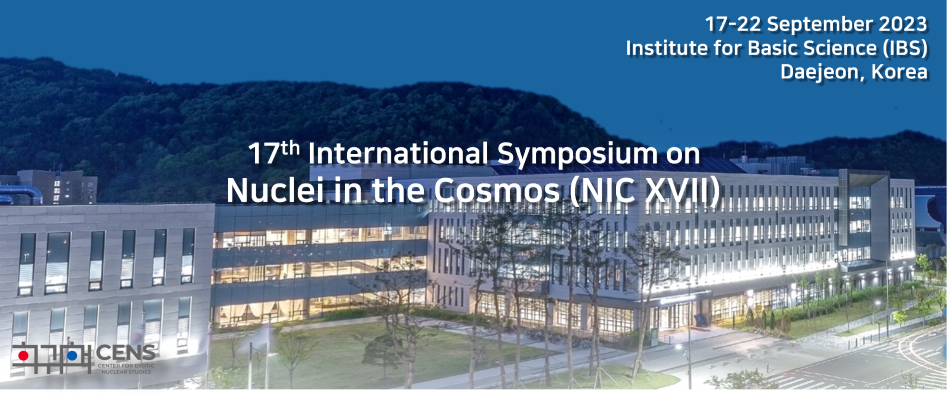Speaker
Description
Rapid neutron capture nucleosynthesis (the r-process) produces nearly half of the nuclei heavier than iron in explosive stellar scenarios.
The solar system r-process residual abundances show two peaks located at $A\sim 130$ and $A\sim 195$. Between these peaks lies the Rare-Earth Peak (REP), a distinct but small peak at mass number $A\sim 160$ that arises from the freeze-out during the final stages of neutron exposure. According to theoretical models and sensitivity studies, half-lives $(T_{1/2})$ and $\beta$-delayed neutron emission probabilities $(P_{xn})$ of neutron-rich nuclei, in the mass region $A\sim 160$ for 55$\le$Z$\le$64 are critical for the formation of the REP [1,2]. The BRIKEN collaboration [3] conducted an extensive measurement program of $\beta$-decay properties of nuclei involved in the r-process at the Radioactive Isotope Beam Factory (RIBF) located in the RIKEN Nishina Center, Japan. The BRIKEN-REP experiment has measured $T_{1/2}$ and $P_{1n}$ of nuclei from Ba to Eu (A $\sim$ 160), belonging to the region that is the most influential to the REP formation [4,5]. In this contribution, we will present the experimental results of new $T_{1/2}$ and $P_{1n}$ branchings within the Ba to Nd region. Furthermore, we will discuss how these new experimental data trends match with the trends from recent nuclear model calculations used for r-process simulations of the REP.
[1] M. R. Mumpower et al , Phys. Rev. C 85, 045801 (2012).
[2] A. Arcones and G. Martinez Pinedo , Phys. Rev. C 83, 045809 (2011).
[3] J.L. Tain et. al , Acta physica polonica B 49(03), 417 - 428 (2018).
[4] G. G. Kiss, et al., The Astrophysical Journal 936 2, 107 (2022).
[5] A. Tarifeño-Saldivia et al , RIKEN Accel. Prog. Rep. 54, 27. (2021).
Acknowledgements:
This work has been supported by the Spanish Ministerio de Economía y Competitividad under Grants nos. FPA2014-52823-C2-1-P, FPA2014-52823-C2-2-P, FPA2017-83946-C2-1-P, FPA2017-83946-C2-2-P and grants from Ministerio de Ciencia e Innovacion nos PID2019-104714GB-C21 and PID2019-104714GB-C22.

